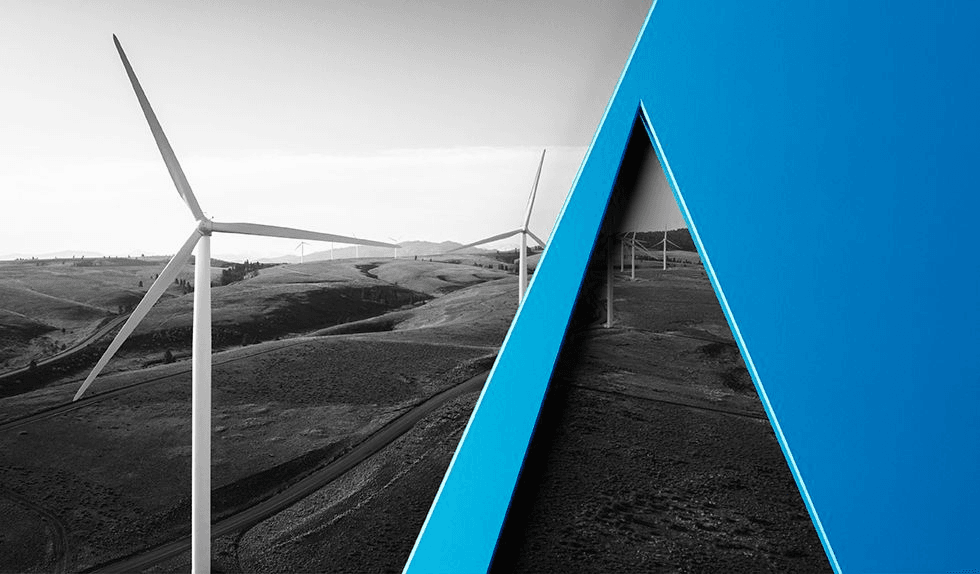On October 19, 2023, the Federal Energy Regulatory Commission (FERC) directed the North American Electric Reliability Corporation (NERC) to submit new or modified Reliability Standards that address the impacts of inverter-based resources (IBRs) on the reliable operation of the Bulk-Power System1 to “protect the grid as the nation makes the transition to expanded use of clean energy technologies.”2 The Final Rule also addresses certain IBRs connected to the distribution system that in the aggregate have a material impact on the Bulk-Power System (IBR-DERs).3 Broadly speaking, IBRs are “power electronic devices [used] to change the direct current power produced by generators into alternating current power that is then transmitted on the bulk electric system,”4 and they are common to solar, wind, battery storage and fuel cell facilities, among others. Because such resources “respond to grid disturbances differently from traditional [synchronous] generation resources such as hydropower, nuclear, coal or natural gas plants,” FERC determined that they require different Reliability Standards “to ensure IBRs support reliability in the same manner as traditional generation resources.”5 We previously covered other FERC actions to address the potential impact of such resources here.
Principal Findings
FERC’s action comes amid the “rapid change in the mix of generation resources connecting to the Bulk-Power System, [and the anticipated] addition of an unprecedented proportion of nonsynchronous resources projected to connect over the next decade, including many generation resources that employ inverters, rectifiers, and converters to provide energy to the Bulk-Power System.”6 In justifying the Final Rule, FERC found that NERC’s current Reliability Standards (1) “do not ensure that Bulk-Power System planners and operators have the necessary tools to plan for and reliably integrate IBRs into the Bulk-Power System or to plan for IBRs connected to the distribution system that in the aggregate have a material impact on the Bulk-Power System;” and (2) “do not contain performance requirements that are unique to IBRs and are necessary to ensure that IBRs operate in a predictable and reliable manner.”7 As such, the Final Rule seeks to “help ensure reliability of the grid by accommodating the rapid integration of new power generation technologies [that] . . . comprise a significant portion of new generating capacity projected to come online over the next decade.” Acting Chairman Willie Phillips added that the enhanced Reliability Standards “will help . . . solve one the biggest problems we’re facing . . . as we make the transition to clean energy resources,” which is ensuring that “these promising new technologies can enhance, not weaken, reliability of the grid.”8
Covered IBRs include “all generation resources that connect to the electric power system using power electronic devices that change direct current (DC) power produced by a resource to alternating current (AC) power compatible with distribution and transmission grids,” including solar photovoltaic, wind, fuel cell and battery storage resources.9 And FERC’s aim of “reliable operation” means “operating the elements of the Bulk-Power System within equipment and electric system thermal, voltage, and stability limits so that instability, uncontrolled separation, or cascading failures of such system will not occur as a result of a sudden disturbance, including a cybersecurity incident, or unanticipated failure of system elements.”10
Substantive Directives to NERC
FERC directed NERC to “develop new or modified Reliability Standards addressing reliability gaps pertaining to IBRs in four areas: (1) data sharing; (2) model validation; (3) planning and operational studies; and (4) performance requirements.” FERC also gave NERC flexibility to “propose to develop new or modified Reliability Standards that address [FERC’s] concerns in an equally efficient and effective manner,” but in that case, NERC must “explain how the new or modified Reliability Standards address the Commission’s concerns” discussed in Order No. 901.11
NERC’s new or modified Reliability Standards must address the following issues:
- Data Sharing: They “must require that generator owners, transmission owners, and distribution providers share validated modeling, planning, operations, and disturbance monitoring data for all IBRs with planning coordinators, transmission planners, reliability coordinators, transmission operators, and balancing authorities so that the latter group has the necessary data to predict the behavior of registered and unregistered IBRs individually and in the aggregate, as well as IBR-DERs in the aggregate, and their impact on the reliable operation of the Bulk-Power System.”
- Model Validation: They “must require that all IBR models are comprehensive, validated, and updated in a timely manner, so that planning coordinators, transmission planners, reliability coordinators, transmission operators, and balancing authorities can adequately predict the behavior of registered and unregistered IBRs individually and in the aggregate, as well as IBR-DERs in the aggregate, and their impacts on the reliable operation of the Bulk-Power System.”
- Planning and Operational Studies: They “must require that planning and operational studies include validated IBR models to assess the reliability impacts of registered and unregistered IBRs individually and in the aggregate, as well as IBR-DERs in the aggregate, on the reliable operation of the Bulk-Power System. The Reliability Standards must require that planning and operational studies assess the impacts of all IBRs within and across planning and operational boundaries for normal operations and contingency event conditions.”
- Performance Requirements: They “must ensure that registered IBRs will provide frequency and voltage support during frequency and voltage excursions in a manner necessary to contribute toward the overall system needs for essential reliability services. The Reliability Standards must establish clear and reliable technical limits and capabilities for registered IBRs to ensure that all registered IBRs are operated in a predictable and reliable manner during normal operations and contingency event conditions. The Reliability Standards must require that the operational aspects of registered IBRs contribute towards meeting the overall system needs for essential reliability services. The Reliability Standards must include post-disturbance ramp rates and phase lock loop synchronization requirements for registered IBRs.”12
Compliance Timeline
FERC established a staggered compliance timeline for NERC over the next several years. Specifically, NERC “must file the new or revised standards in tranches, with each tranche due no later than November 4 of each of the next three years.”13 NERC also has 90 days to submit “an informational filing that includes a detailed, comprehensive standards development and implementation plan.”14
NERC’s informational filing must provide “a detailed and comprehensive standards development plan explaining how NERC will prioritize the development of new or modified Reliability Standards to meet the deadlines set forth in [the] final rule.”15 Then, by November 4, 2024, NERC must submit new or modified Reliability Standards that “establish IBR performance requirements, including requirements addressing frequency and voltage ride through, post-disturbance ramp rates, phase lock loop synchronization, and other known causes of IBR tripping or momentary cessation.”16 By that same date, NERC must also submit new or modified Reliability Standards that “require disturbance monitoring data sharing and post-event performance validation for registered IBRs.”17 By November 4, 2025, NERC must submit new or modified Reliability Standards “addressing the interrelated directives concerning: (1) data sharing for registered IBRs, unregistered IBRs, and IBR-DERs in the aggregate; and (2) data and model validation for registered IBRs, unregistered IBRs, and IBR-DERs in the aggregate.”18 And finally, by November 4, 2026, NERC must submit new or modified Reliability Standards “addressing planning and operational studies for registered IBRs, unregistered IBRs, and IBR-DERs in the aggregate.”19
While FERC did not direct NERC “to include implementation dates in its informational filing” and is “leaving determination of the appropriate effective dates to the standards development process,” FERC noted its concern that “the lack of a time limit for implementation could allow identified issues to remain unresolved for a significant and indefinite period.”20 Therefore, FERC emphasized that because “industry has been aware of and alerted to the need to address the impacts of IBRs on the Bulk-Power System since at least 2016” and there exists significant need for “expeditious implementation of new or modified Reliability Standards addressing IBR data sharing, data and model validation, planning and operational studies, and performance requirements,” FERC will “take these issues into account when it considers the proposed implementation plan for each new or modified Reliability Standard when it is submitted for Commission.”21 While it is unclear what the exact implementation timeline for the new or modified Reliability Standards will be, FERC also noted its belief that “there is a need to have all the directed Reliability Standards effective and enforceable well in advance of 2030,” and directed NERC “to ensure that the associated implementation plans sequentially stagger the effective and enforceable dates to ensure an orderly industry transition for complying with the IBR directives in this final rule prior to 2030.”22
Implications
NERC’s new or modified Reliability Standards resulting from Order No. 901 likely will have broad and potentially significant effects on the renewable power generation industry for generator owners and operators as well as other NERC-registered entities, including increased costs, compliance requirements and related risks. As such, covered entities should closely monitor NERC’s development processes, provide feedback as appropriate in response to NERC’s filings and take other steps necessary to ensure compliance going forward.
1 Reliability Standards to Address Inverter-Based Res., Order No. 901, 185 FERC ¶ 61,042, at P 1 (2023) (footnotes omitted) (“Order No. 901” or the “Final Rule”).
2 FERC News Release, FERC Moves to Protect Grid for Transition to Clean Energy Resources, https://www.ferc.gov/news-events/news/ferc-moves-protect-grid-transition-clean-energy-resources (last visited Oct. 31, 2023) (“FERC News Release”). The “Bulk-Power System” broadly consists of the “facilities and control systems necessary for operating an interconnected electric energy transmission network (or any portion thereof) . . . and electric energy from generating facilities needed to maintain transmission system reliability,” but excludes “facilities used in the local distribution of electric energy.” Order No. 901 at n.5.
3 Order No. 901 at P 4.
4 FERC News Release at 1.
5 Id.
6 Order No. 901 at P 2 (quotation marks and footnotes omitted). According to FERC, “[a]n inverter is a power electronic device that inverts DC power to AC sinusoidal power. A rectifier is a power electronic device that rectifies AC sinusoidal power to DC power. A converter is a power electronic device that performs rectification and/or inversion.” And “[c]onsistent with NERC’s terminology,” FERC “uses the term ‘inverter’ to refer to generating facilities that use power electronic inversion, rectification, and conversion.” Order No. 901 at n.10 (citing NERC, Inverter-Based Resource Performance and Analysis Technical Workshop, 29 (Feb. 2019), https://www.nerc.com/
comm/PC/IRPTF%20Workshops/IRPTF_Workshop_Presentations.pdf).
7 Order No. 901 at P 4 (footnote omitted).
8 FERC News Release at 1.
9 Order No. 901 at n.3.
10 Id. at n.4.
11 Id. at P 1.
12 Id. at P 5 (footnote omitted).
13 FERC News Release at 1.
14 Id.
15 Order No. 901 at P 6.
16 Id. at P 7 (footnote omitted).
17 Id.
18 Id.
19 Id.
20 Id. at P 8.
21 Id.
22 Id.



